How to Grow Stunning Snapdragons from Seed Indoors
Have you ever thought about growing gorgeous snapdragon flowers from seed in your garden? In this guide, I’ll walk you through everything, from sowing and germinating your seeds indoors to transplanting them into your garden and enjoying a season of brilliant blooms.
Snapdragons (Antirrhinum majus) were one of the first summer cut flowers I found when I started my garden. Their vibrant colors and unique, dragon-shaped blooms immediately caught my eye, and I quickly learned that they are just as productive as they are charming—the more you cut them, the more they bloom.
Starting your snapdragon seedlings indoors is a smart way to give them a headstart. It sets the stage for a healthy growing season and creates a controlled environment where your seedlings can thrive. Here are some of my personal tips and experiences to help you make the most of your snapdragon journey.

As an Amazon affiliate, I earn a commission from qualifying purchases at no additional cost to you. My blog also features other affiliate links for your convenience. Click here to read my privacy policy.
Snapdragon Basics
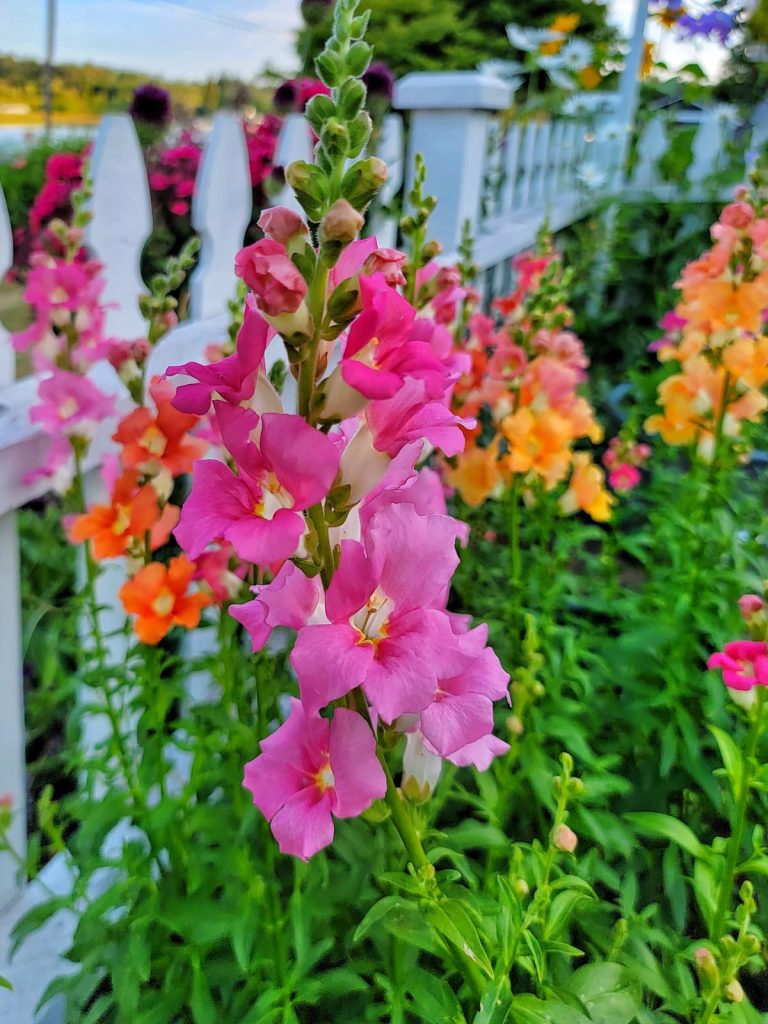
Scientifically known as Antirrhinum majus, these charming blooms originally come from the Mediterranean. Depending on your climate, they can be annuals or perennials, and they really shine in cooler weather—perfect for those late spring or fall garden moments.
Snapdragons come in a rainbow of colors—red, pink, orange, yellow, purple, and white—and they’re available in different sizes. Whether you’re working with compact spaces (dwarf varieties), a balanced mix (medium types), or you want a dramatic impact (tall ones that can reach up to 3 feet), there’s a snapdragon for every garden style.
Once established, I find snapdragons to be pretty low-maintenance. They do best in well-drained soil with moderate watering and a spot that enjoys either a sunny splash or a bit of shade. And as a bonus, these gorgeous flowers attract pollinators like bees and butterflies, adding an extra layer of life and color to your garden
Why You Should Grow Snapdragons from Seed
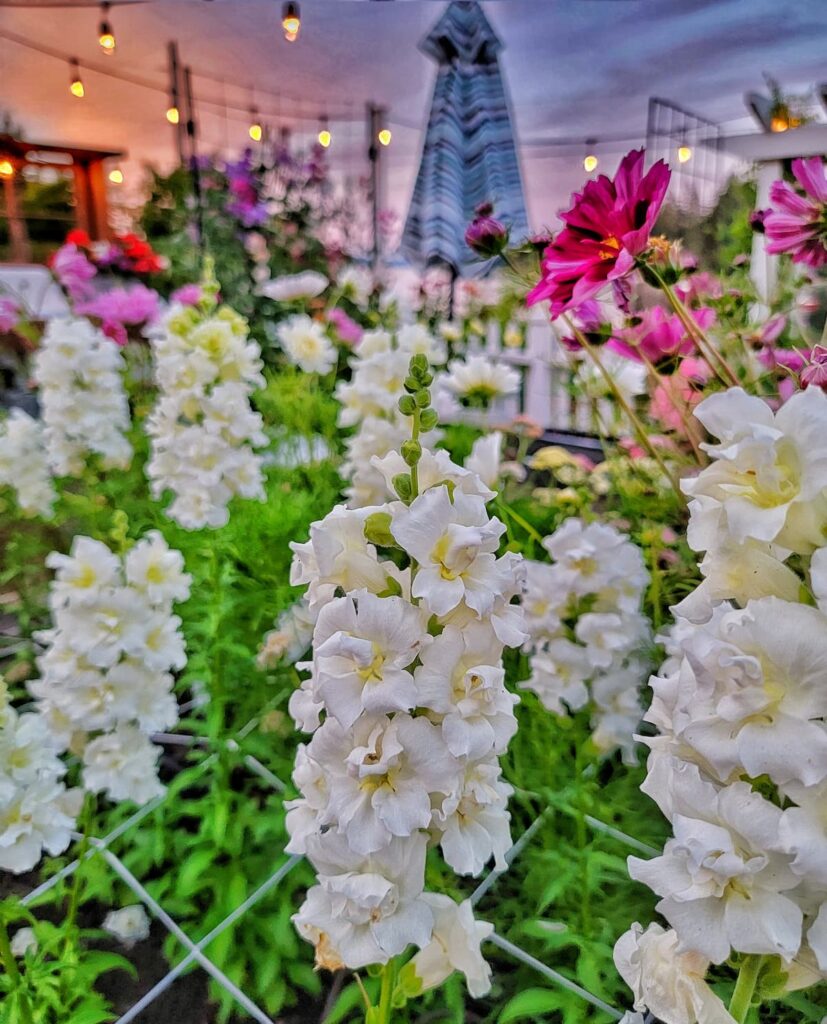
Growing snapdragons from seed indoors comes with benefits that you just don’t get when you pick up young plants from a garden center.
Cost-Effective
Starting with seeds is cost-effective. They’re a fraction of the cost of seedlings, which means you can experiment with different snapdragon varieties without spending a fortune.
More Varieties to Choose from

When you grow snapdragons from seed, you open yourself up to a much wider palette of colors and types than what’s available at your local nursery.
If you’re dreaming of those tall snapdragons perfect for cut flower arrangements, you’ll mostly find them starting from seed. And if you’re into the compact types for planters or window boxes, seeds give you that flexibility, too.
Snapdragon Plants are More Protected Indoors
One of the best benefits of growing snapdragons from seed indoors is the chance to give them a safe, nurturing start. I love watching over them during those early, delicate stages, shielding them from pests and unexpected weather.
This extra care helps them develop strong roots and sturdy growth, so by the time they’re ready for the garden, they’re strong and resilient and ready for a brilliant bloom.
Seed Starting Supplies
Check out my favorite supplies and tools for starting seeds indoors. Whether you’re looking for grow lights or a seed starting mix, you’ll find what I use in my own greenhouse.
When to Start Growing Snapdragons from Seed
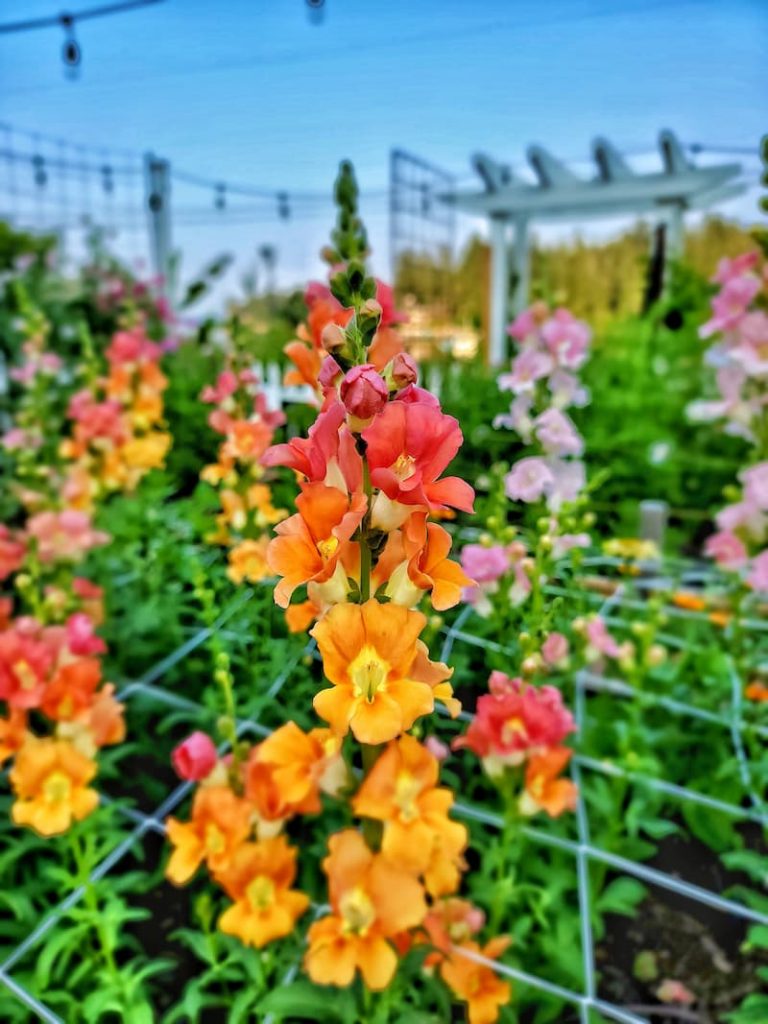
If you want your snapdragons to enjoy the longest blooming season possible, timing is key. I always check the back of the seed packet for guidance on when to start sowing your seeds indoors.
Knowing your USDA Plant Hardiness Zone is very important. I like to start mine 8-10 weeks before the last frost in my area. This cooler start is perfect since snapdragons really thrive in those conditions.
If you want to directly sow your snapdragon seeds in the garden, plant them in loose, rich soil in full sunlight after the last hard frost. Sprinkle the seeds lightly on the soil’s surface and gently press them in.
Supplies for Growing Snapdragons from Seed

Steps for Sowing Snapdragon Seeds
Step 1: Choose a Clean Plant Container With Drainage Holes

To avoid waterlogged soil, choose a clean container with drainage holes. I like using cell trays or plastic pots for my snapdragon seeds.
If you’re reusing old containers, be sure to wash them well with a mix of 1 part bleach to 9 parts water to keep any unwanted diseases at bay.
For more details, I’ve shared my tips in my “Supplies Needed for Seed Starting” post.
Step 2: Fill Containers with Moistened Seed Starter Mix
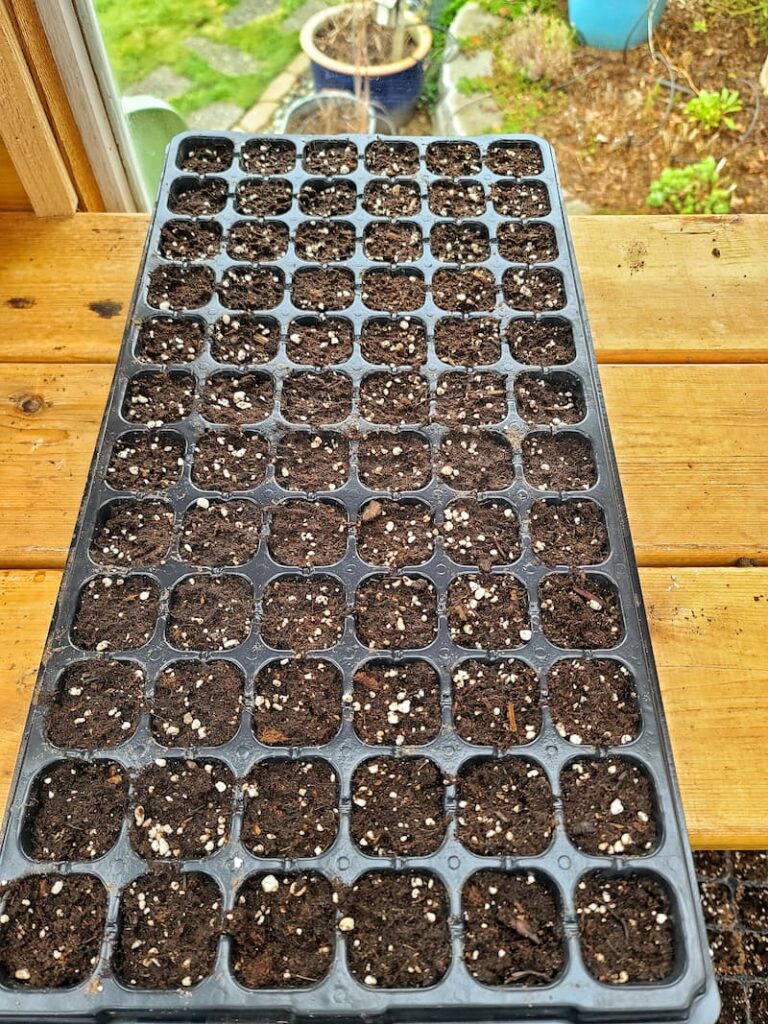
I always swear by a high-quality seed starting potting soil when sowing snapdragon seeds. Good soil really makes all the difference.
Before you fill your cell trays or containers, give your seed starter mix a good pre-moistening until it’s thoroughly damp (but not soaking wet).
Once it’s ready, fill your containers with the mix. As you do, gently tap the tray or pot against your table to help settle the soil and eliminate any air pockets. Here’s why I love using a seed starting mix:
Step 3: Label or Tag the Containers

Remember to label your containers! I like to tag mine with the snapdragon variety and the planting date. It’s a lifesaver when you check in a few days later and need a quick reminder of what’s what.
Step 4: Sow Snapdragon Seeds
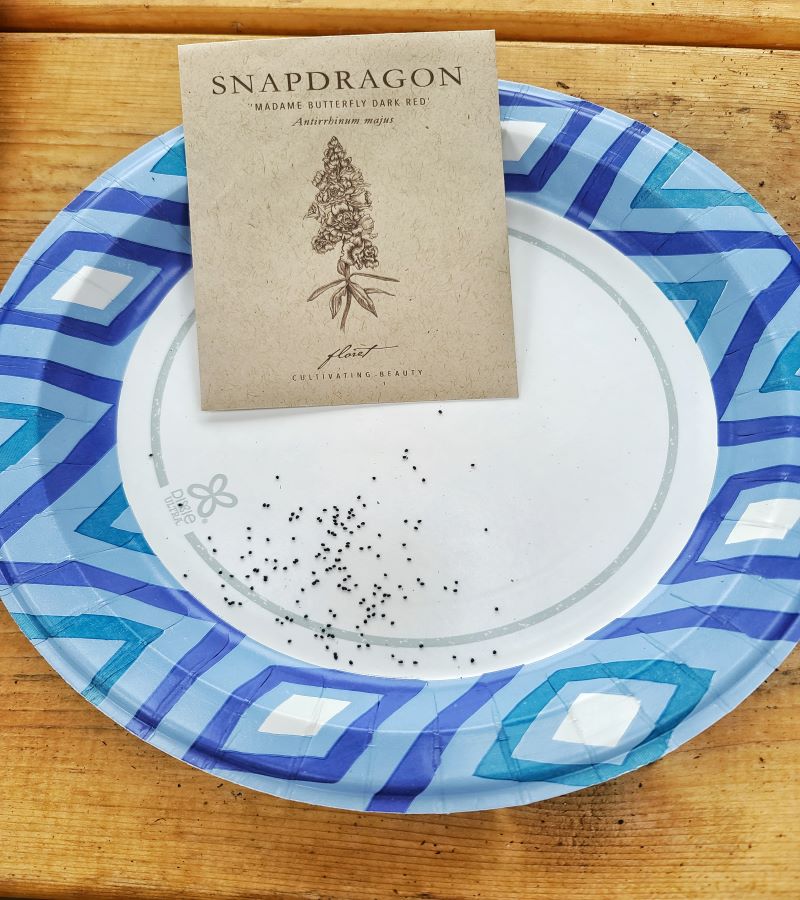
Because these are such tiny seeds, I like to use a slightly damp toothpick to gently pick up each seed and place it into the cell of your seed tray.
Remember, snapdragon seeds need light to kickstart germination, so resist the urge to cover them with soil. Just let them sit on the surface and soak up those rays.
Step 5: Bottom Water Your Seed Containers
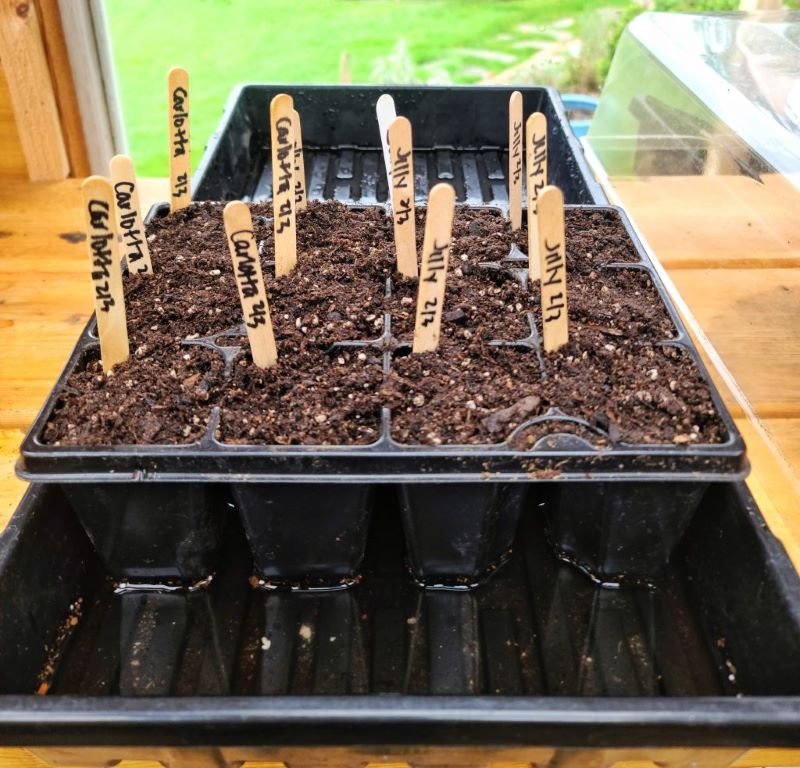
Bottom watering is the most gentle and easy way to water your snapdragon seedlings.
After sowing your seeds, fill a drainage tray with about an inch of water and let your seed container sit in it for a bit (no longer than an hour).
This method allows the soil to soak up moisture evenly without the risk of washing your tiny seeds away, which can happen with overhead watering. Bottom watering ensures that your seedlings’ roots get all the hydration they need to grow strong.
Step 6: Cover With a Humidity Dome Lid
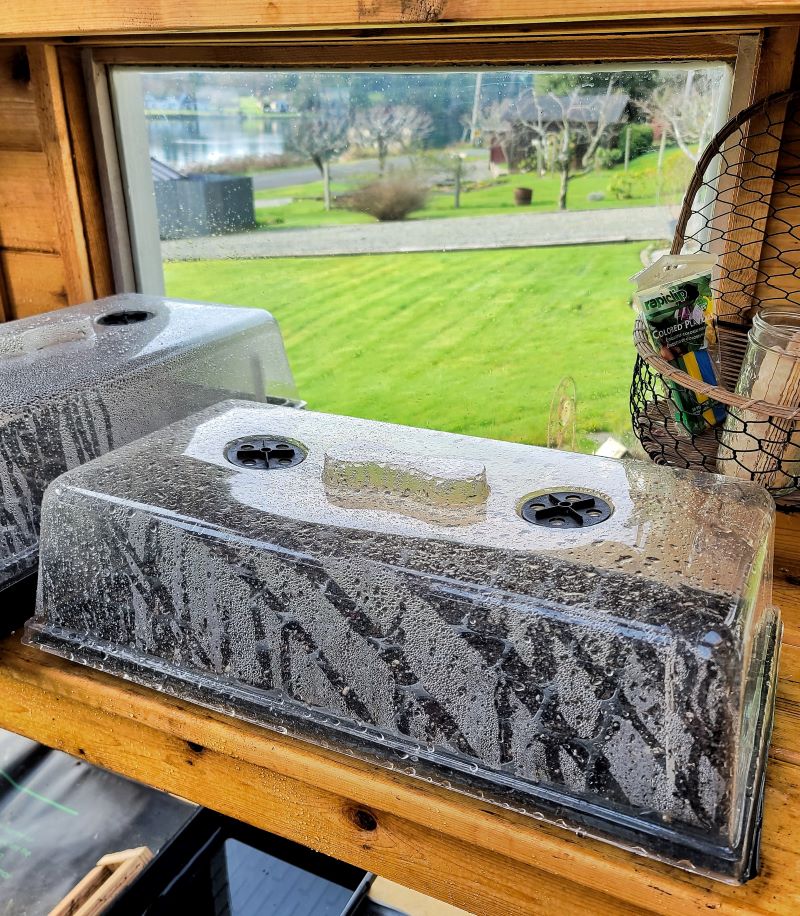
Cover your container with a plastic dome lid to increase humidity and speed up germination.
Once your seeds are in place, cover the container with a plastic humidity dome lid. This dome creates a mini greenhouse effect that keeps the moisture high and helps speed up germination.
Step 7: Pick the Right Location Indoors

Your snapdragon seedlings will thrive best in a bright, light-filled space, whether it’s a sunny windowsill, greenhouse, or cozy sunroom. If natural light is scarce, position your containers about 3-4 inches below fluorescent or grow lights and let them shine for 16 hours a day.
This setup gives your seedlings all the energy they need during the day, allowing them to rest and grow at night.
Step 8: Continue Watering
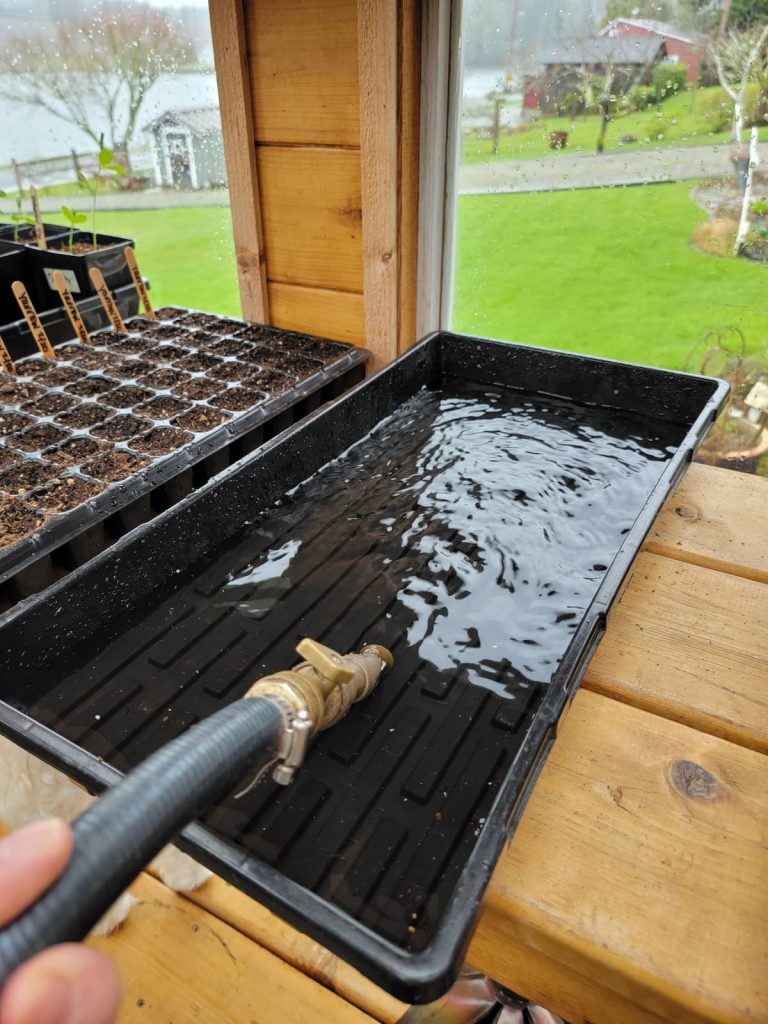
Check your containers every other day and bottom water when the soil looks and feels dry. Remove the tray of water once the soil surface is evenly moist.
This routine helps ensure your snapdragon seedlings always have the hydration they need without getting waterlogged.
Seed Starting Tip
Keep the soil temperature cool, ideally between 55 and 68°F and not above 75 °F. Using a heat mat for snapdragon seed germination isn’t necessary and may hinder the process.
Growing Snapdragons After the Seeds Have Germinated
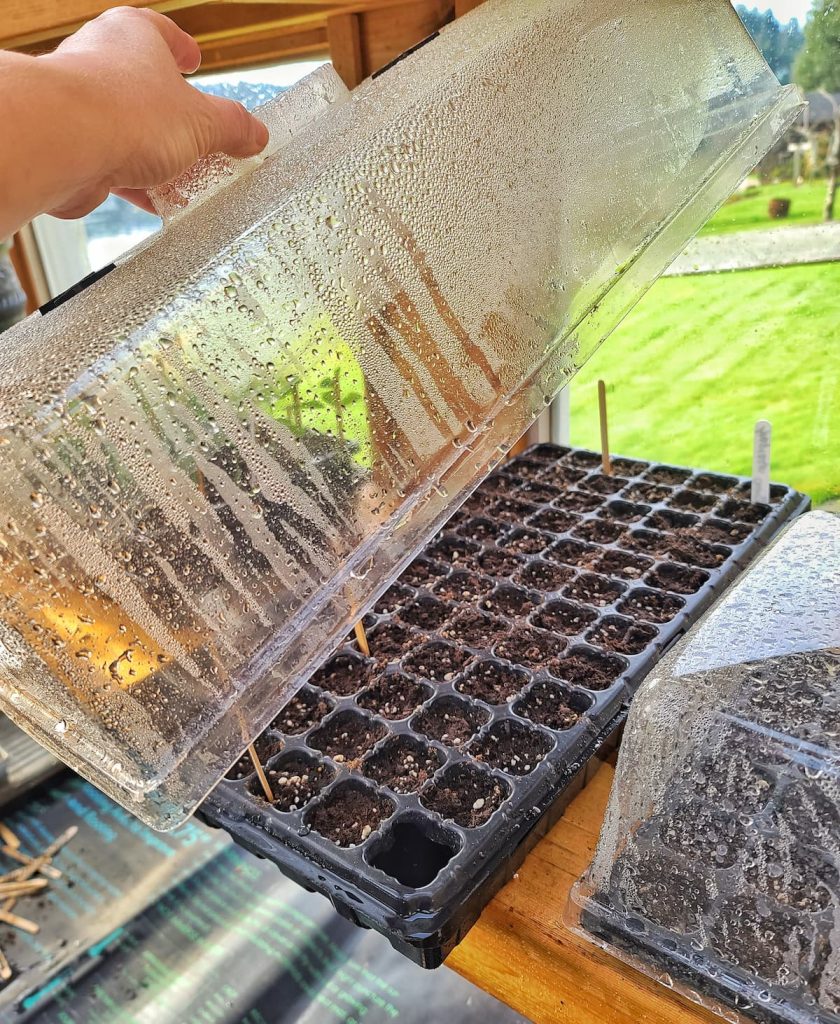
Snapdragons are slower to germinate than most cut flowers. You should see growth within a couple of weeks.
Uncover the Container
Check the seed container daily. Remove the clear dome lid once the seeds have germinated and the sprouts are visible.
Snapdragons take a bit longer to sprout than other cut flowers—usually, you’ll see growth within a couple of weeks. Once those tiny green shoots appear, it’s a clear sign they’re ready for a change.
Continue to Water When Needed
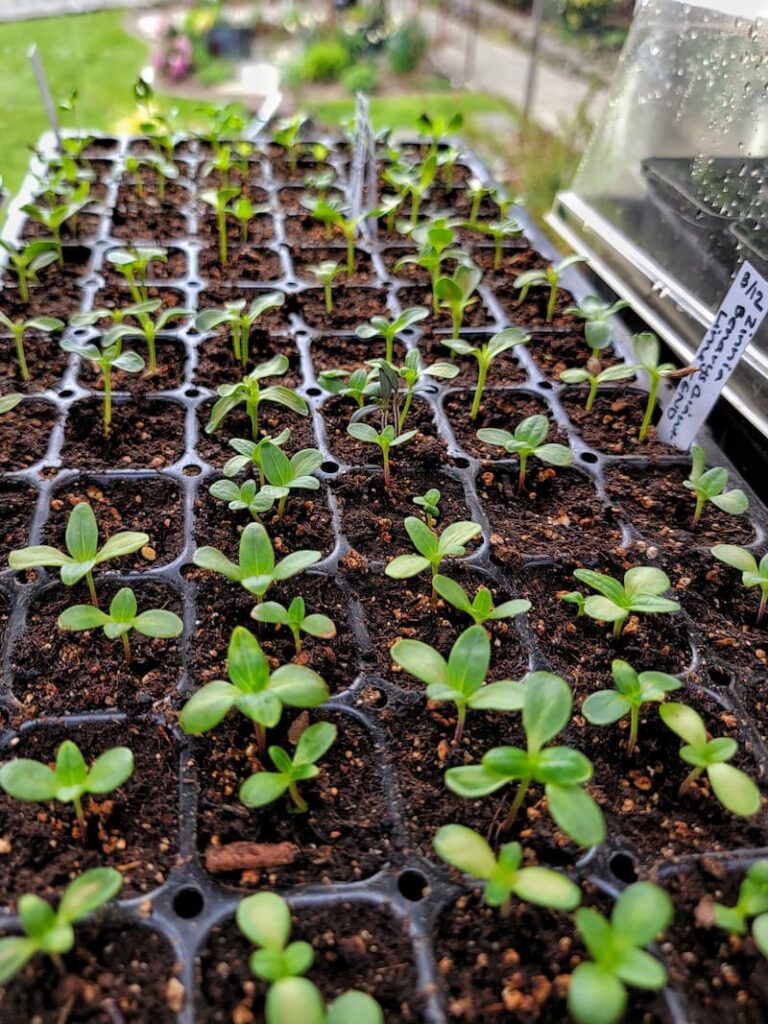
Check the seedlings daily to ensure the soil doesn’t dry out.
The very first leaves, known as cotyledons, are just the beginning—keep bottom watering until you see the first “real” leaves appear.
Once that second set of leaves shows up, switch to a gentle spray from a watering can or hose every 1-2 days to keep them happy.
Provide Good Air Circulation
Good airflow is key for healthy snapdragon seedlings. Set up a small fan near your plants to help prevent mold and encourage more vital, healthier plants.
Thin Snapdragon Seedlings if Needed
When your snapdragon seedlings develop two sets of true leaves, it’s a good idea to thin them out to one plant per cell if they’re getting too crowded. This extra space lets each plant grow to its full potential.
Fertilize the Snapdragon Seedlings
About three to four weeks after planting, give your seedlings a gentle boost with a water-soluble indoor plant fertilizer mixed at half-strength. This helps them build strong roots and thrive without being overwhelmed by too many nutrients.
Pinching Your Snapdragons
Once a snapdragon plant is 4-6 inches tall and has at least three sets of leaves on each stalk, start pinching it back to encourage branching from the base of the plant for a bushier plant. This also helps to produce more blooms.
Snip off the central growing tips of the plant just above the leaf joints. Continue this throughout the growing season. This encourages branching at the base, leading to a bushier plant and even more blooms.
Preparing Garden Beds for Snapdragons
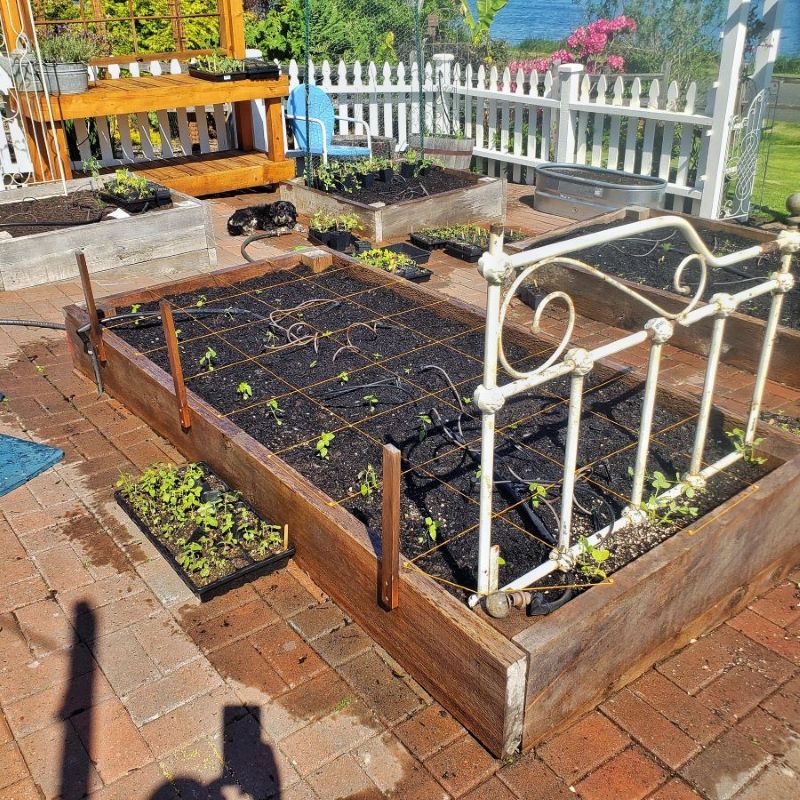
Setting up the perfect garden bed for snapdragons is key to helping them thrive and produce vibrant blooms throughout the season.
By preparing the garden beds with well-draining, nutrient-rich soil and plenty of sunlight, you’ll give your snapdragons the best possible start. This will ensure strong, healthy plants that reward you with a stunning display of color.
Preparing Garden Beds in Full Sun
When setting up your garden bed, pick a spot that soaks up at least 6 to 8 hours of direct sunlight each day. This sunshine is key for developing strong roots, sturdy stems, and those vibrant blooms we all love.
Provide Nutrients
Before you transplant your young snapdragon seedlings, enrich your garden bed with organic matter. I like to mix in compost or aged manure to boost the soil’s structure, fertility, and water retention.
This nutrient-rich base sets the stage for a flourishing garden, ensuring your snapdragons have everything they need to thrive.
Hardening Off Your Snapdragons

Now that you’ve lovingly nurtured your snapdragons from seed, it’s time to prepare them for the great outdoors. Hardening off is all about easing your young plants into the harsher conditions outside for about 7 to 10 days.
Start by placing your snapdragon seedlings in a sheltered, partially shaded spot for a few hours each day. Avoid full-on direct sunlight and strong winds, which could damage them. Gradually extend their outdoor time each day so they can adjust to more sunlight and the natural temperature swings.
This slow transition helps strengthen their cell structure and minimizes the shock of moving from a cozy indoor environment to the variable outdoors.
Water the seedlings well during this period to prevent stress.
Transplanting Snapdragon Seedlings to the Garden
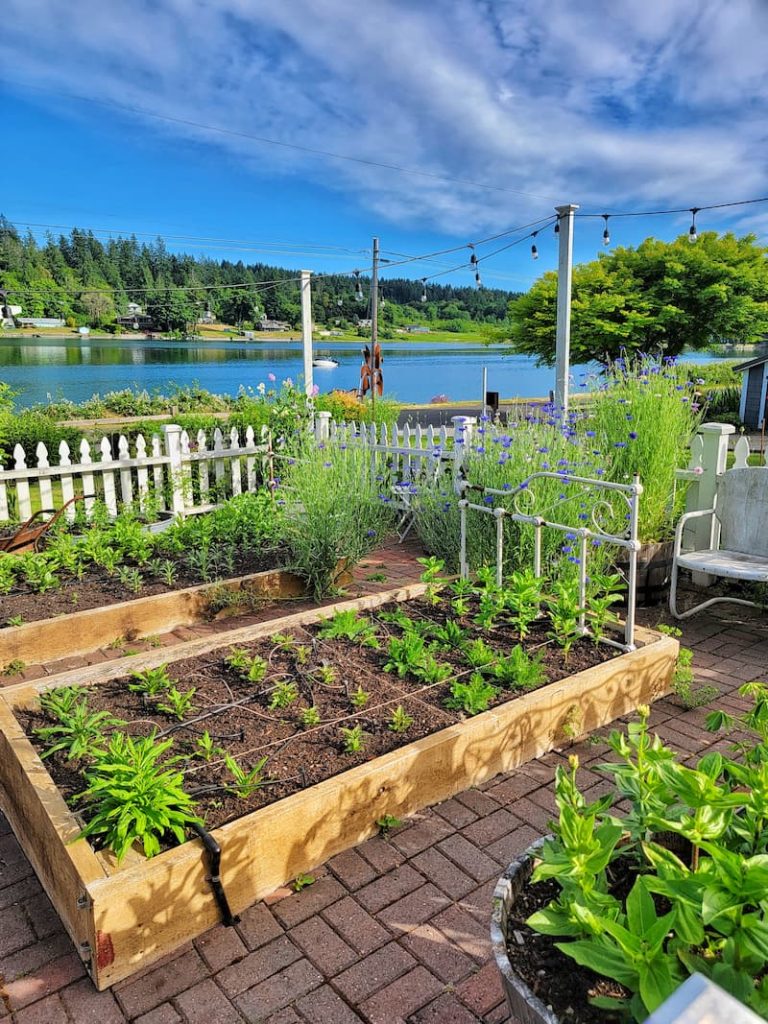
Snapdragons are surprisingly tough—they can even handle a light frost or two.
Once your seedlings have developed three sets of true leaves, it’s a good time to move them outside, even a few weeks before your area’s last frost date.
After you’ve prepped your garden bed, set up rows with plenty of space between each plant. This extra room lets your snapdragons stretch out, soak up ample sunlight, and helps keep diseases like powdery mildew at bay.
Add a layer of mulch after planting to help retain soil moisture, reduce weed competition, and keep root systems cooler under the intense sun.
Caring for Your Snapdragons
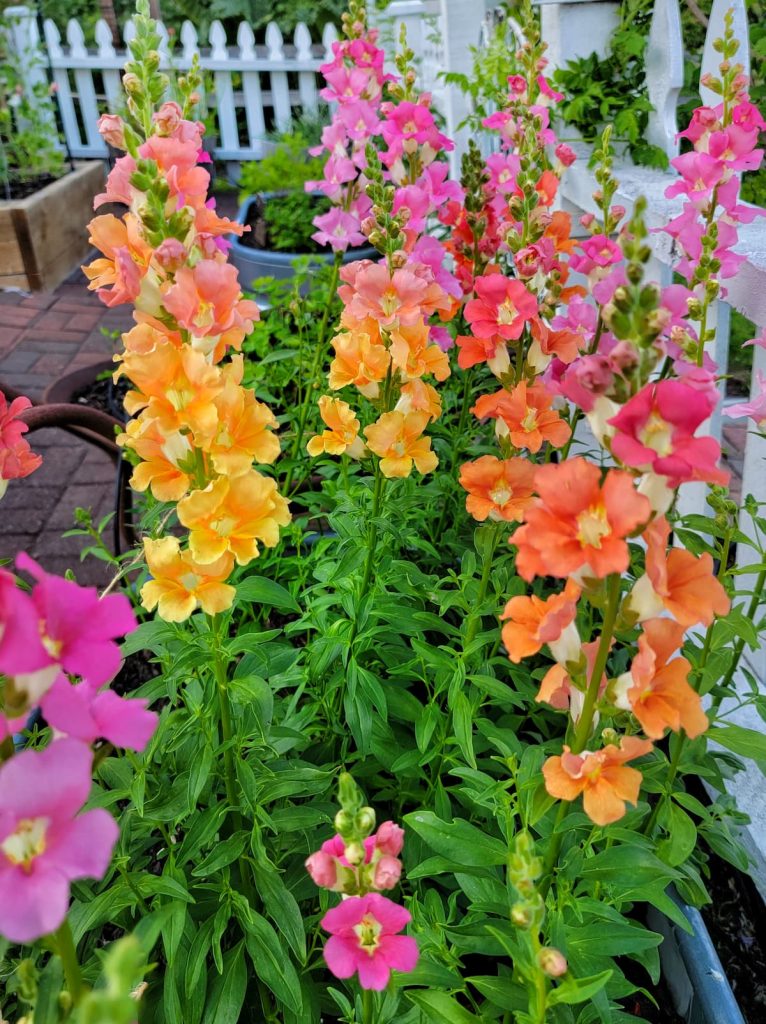
Watching your snapdragons thrive is one of the best parts of gardening. With a few simple care tips, you can keep them healthy and blooming all season long. Here’s how I keep mine in tip-top shape:
Protect Snapdragon Plants with Netting
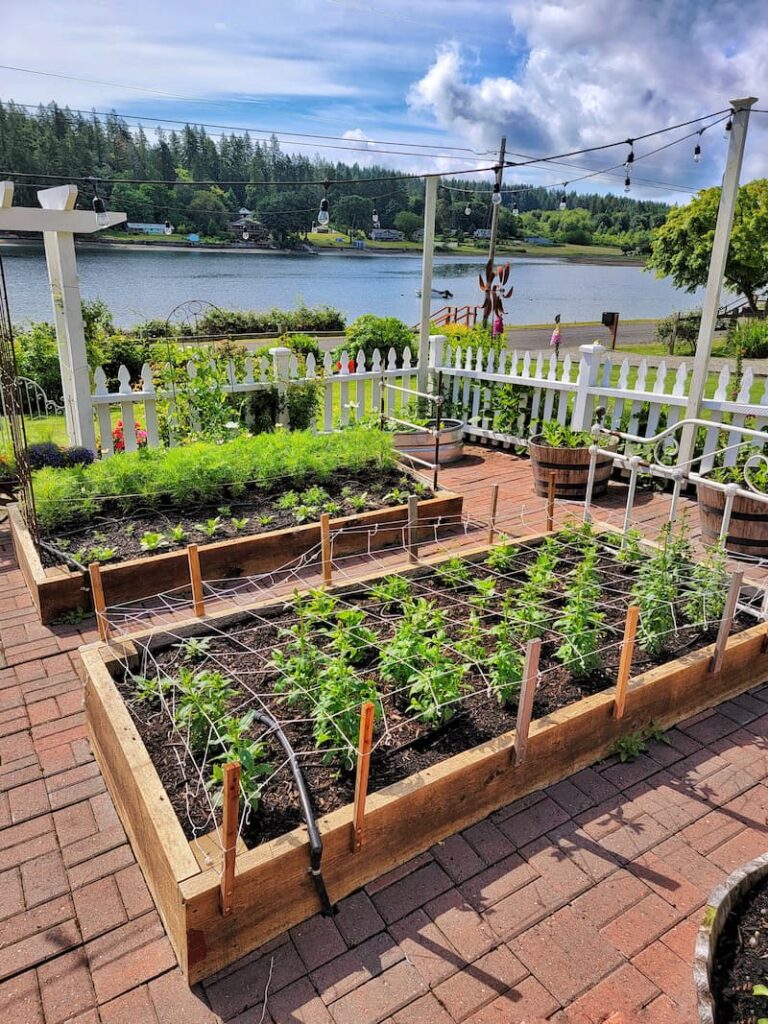
Once your snapdragons hit about six inches tall, they start needing a little extra support. I like to drape soft mesh trellis netting over my beds to help keep those heavy stems from toppling over in the rain or wind.
Watering
Snapdragons love consistent moisture, especially during the summer heat.
I usually water early in the morning to reduce evaporation and give the leaves time to dry before nightfall. This helps prevent disease while keeping the soil moist (but not waterlogged).
Adding a layer of mulch around your plants can also help retain moisture and reduce evaporation. Just tweak your watering schedule to suit your garden’s specific needs and the weather conditions.
Feeding Plants

A balanced, slow-release fertilizer at the start of the season can really boost your snapdragons’ growth and blooming power. It’s a little nudge that sets them up for a strong and colorful display.
Pest and Disease Control
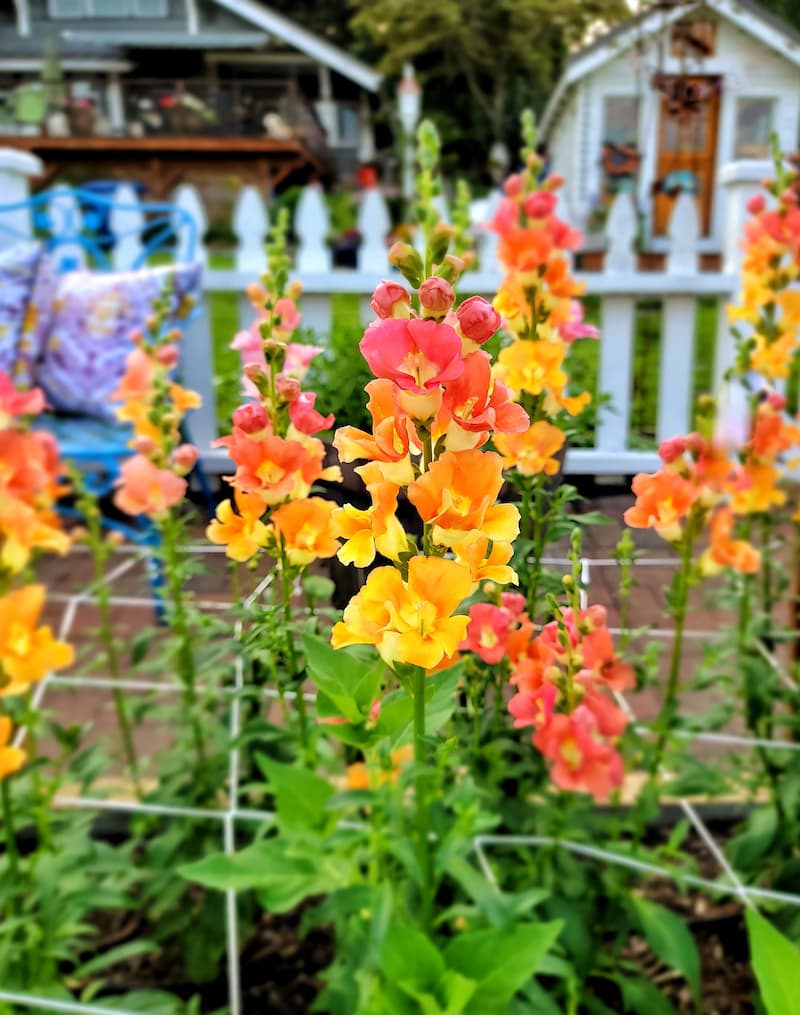
Keeping a close eye on your snapdragons is key. Regular monitoring for pests and diseases allows you to take prompt, organic measures to keep your plants healthy and beautiful.
Deadhead and Harvest Frequently
Deadhead-spent flowers encourage your plants to produce new blooms and help them grow bushier. It also extends the flowering period to enjoy their beauty longer.
Harvesting Snapdragons
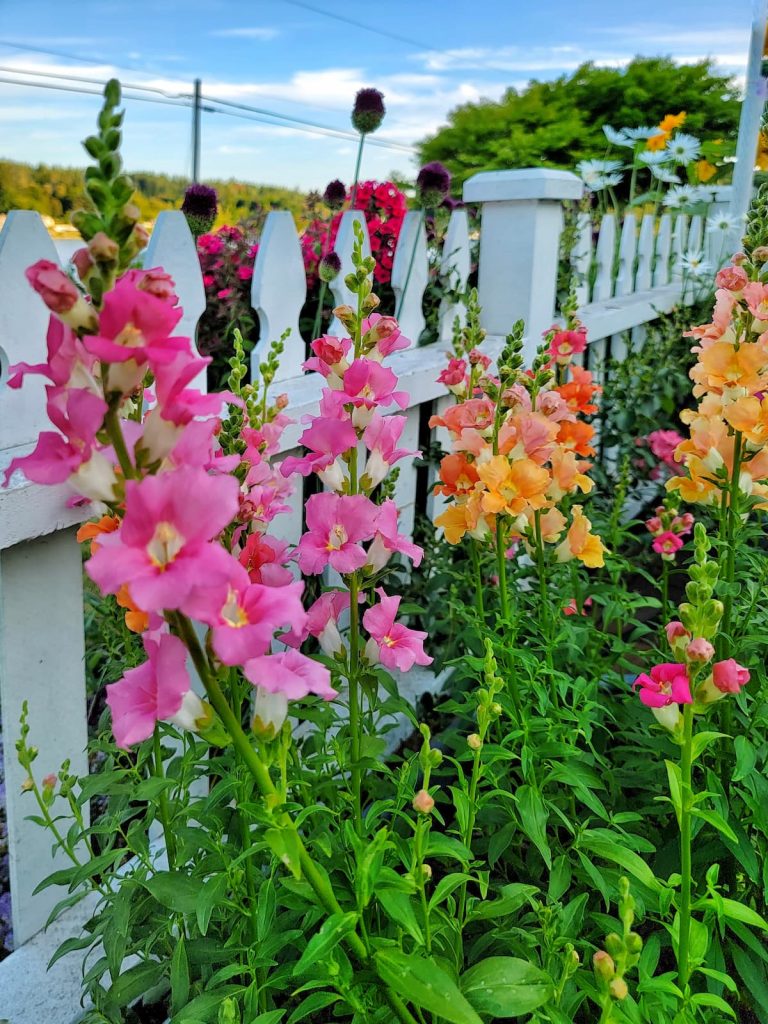
For the best results and to encourage more blooms, use sharp pruning shears or scissors to make a clean cut just above a leaf node. Once you’ve made your cuts, immediately place the flowers in a cool water bucket to help prevent wilting.
When you bring them indoors, give the stems a fresh cut at an angle underwater. This promotes water uptake and lets you remove any leaves that might sit below the waterline and cause bacteria buildup.
Finally, adding a floral preservative can extend the vase’s life, keeping your arrangement fresh and beautiful for longer. Enjoy your stunning snapdragon display!
Save Snapdragon Seeds to Grow for Next Year’s Garden
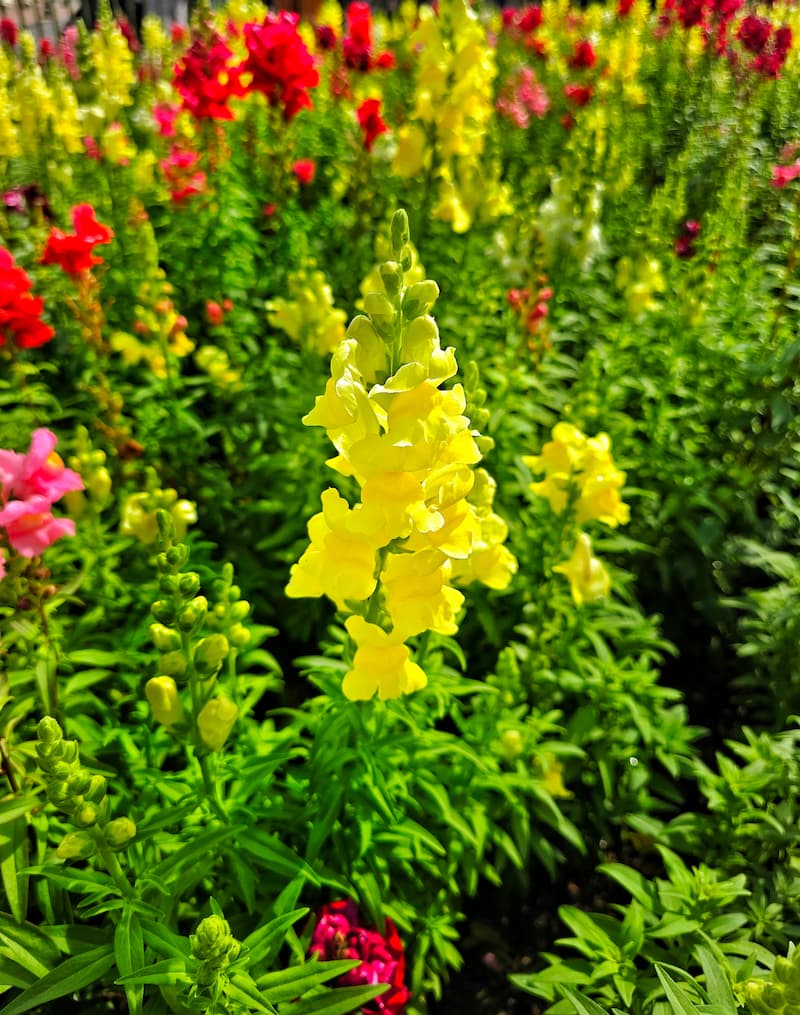
As the flowering season starts to wind down, keep an eye on your snapdragons for those little seed pods forming where the blooms once were. I always get excited about this stage—it’s like a sneak peek into next year’s garden!
Once the pods mature and turn brown, you know the seeds are ready to be harvested. Carefully clip the pods off the plant and let them dry in a warm, well-ventilated spot for about a week. This drying process makes it much easier to extract the tiny seeds.
When the pods are dry, gently open them over a container to catch the seeds. They’re pretty small, so handle them with care.
Finally, store your seeds in a labeled, airtight container and keep it in a cool, dry place. With these steps, you’ll have a neat little seed stash ready to kickstart your snapdragon garden next year!
Common Mistakes Made When Growing Snapdragons from Seed
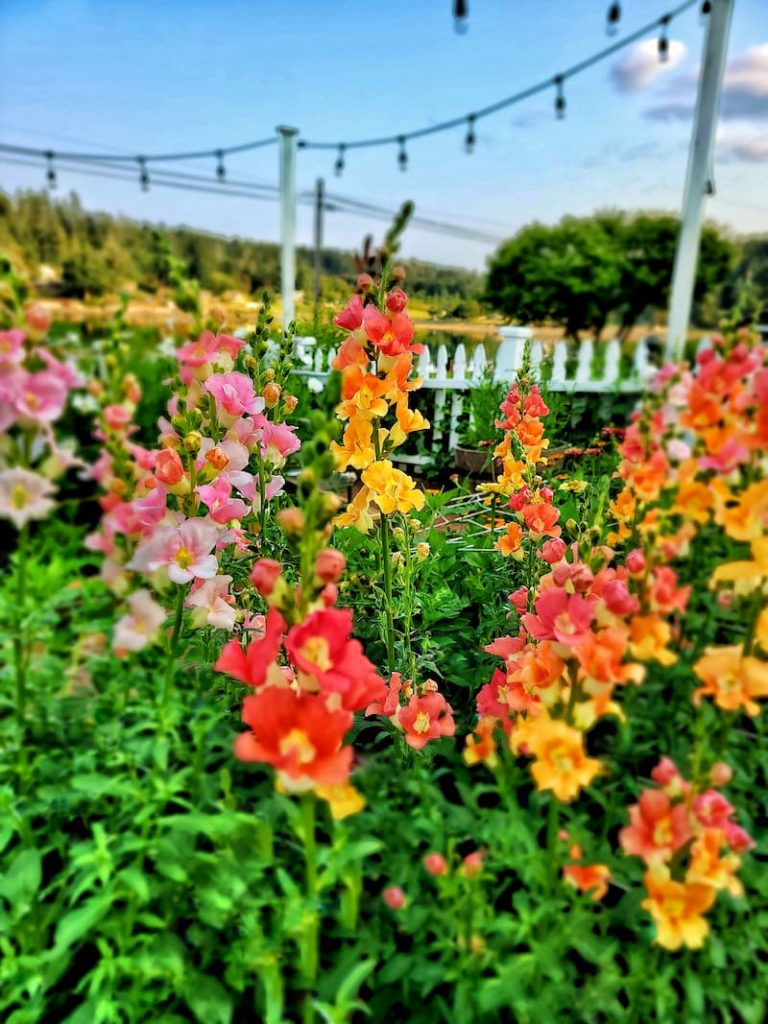
Growing snapdragons from seed is super rewarding, but I’ve learned there are a few pitfalls along the way. Here are some common mistakes to watch out for:
Gardening Made Simple – Your Guide to Growing a Cut Flower Garden
Common Questions About Growing Snapdragons from Seed
How Long Do Snapdragons Take from Seed?
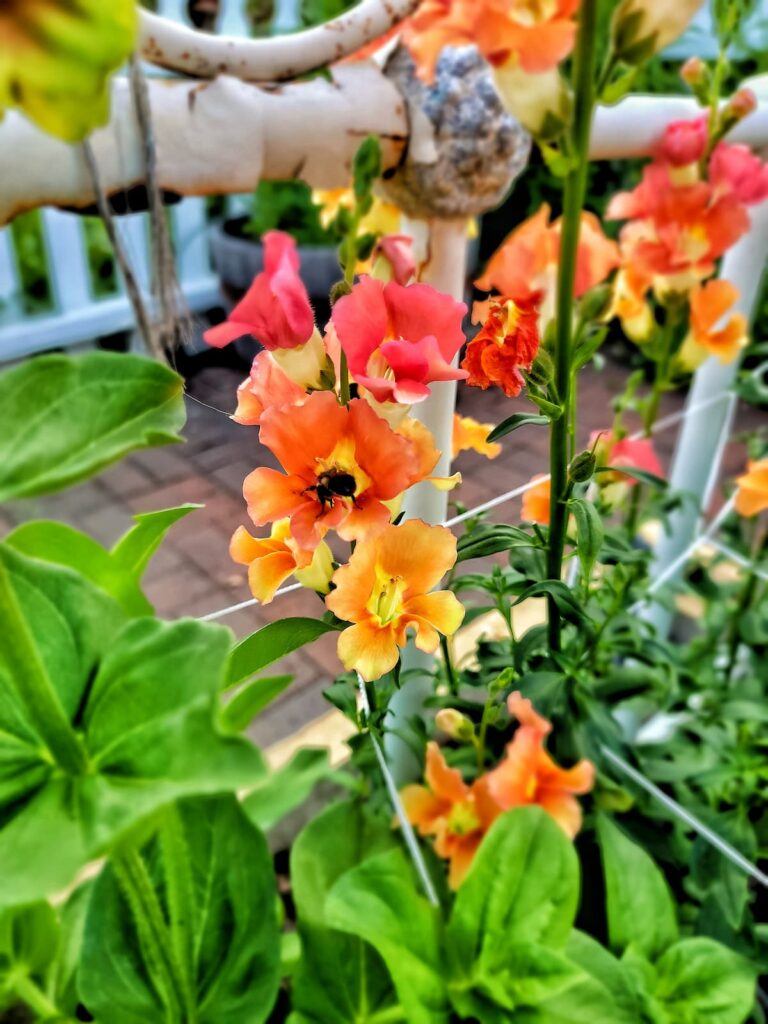
In my experience, snapdragons typically take about 7 to 14 days to fully germinate when given the right conditions. They need plenty of light, consistent moisture, and a bit of warmth.
Once those tiny seedlings break through, the next few weeks are all about building a strong root system and developing healthy foliage, so keep an eye on their needs during this crucial phase.
Depending on the variety and your local growing conditions, you might see those gorgeous blooms as early as 8 to 12 weeks after sowing. I always like to start my seeds around 8 to 10 weeks before the last expected frost date.
That head start ensures your plants are strong enough to transplant outdoors and ready to dazzle your garden when the weather finally cooperates. Enjoy watching your snapdragons come to life!
Do Snapdragons Come Back Every Year?
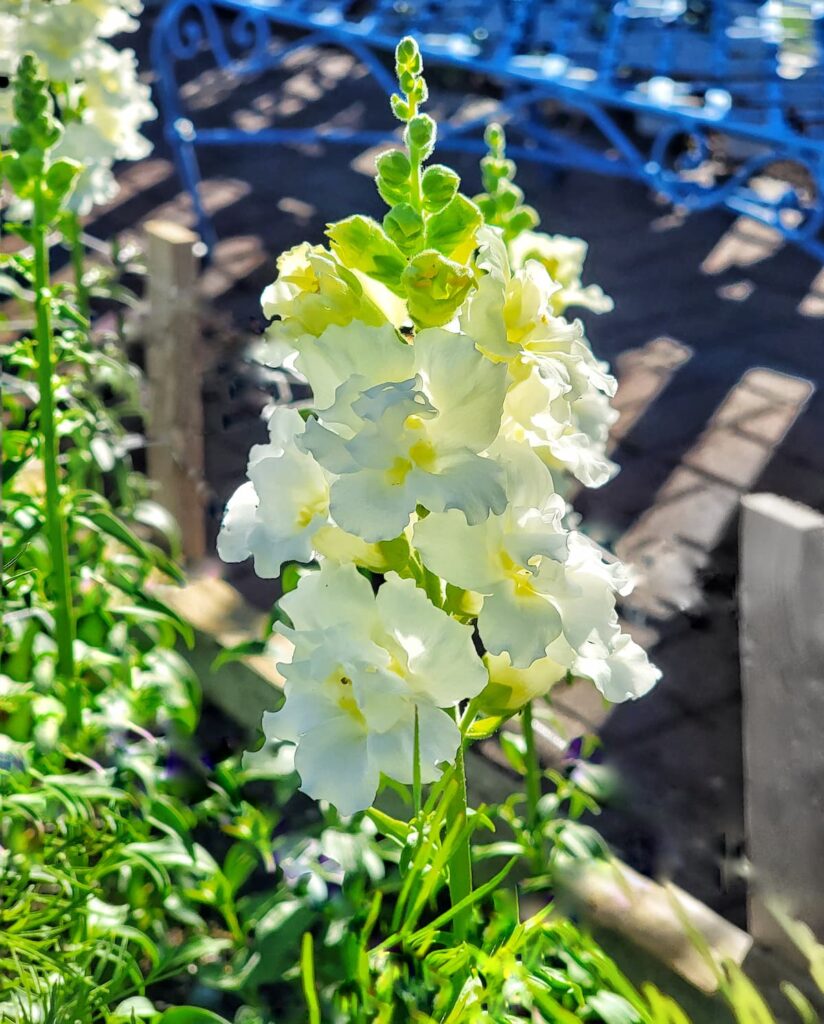
Snapdragons are a bit of a mixed bag when it comes to their yearly comeback. Technically, they’re perennials in USDA hardiness zones 7 through 11, so if you live in one of those areas, your snapdragons might surprise you by coming back year after year. However, in many gardens, they’re grown as annuals.
Despite being grown as annuals in many areas, snapdragons tend to self-seed. The seeds dropped from last year’s plants can germinate and develop the following spring, giving the appearance that the plants are coming back each year.
I usually leave a few spent flowers on the plants at the end of the season to give those seeds a chance to fall naturally and take root. Enjoy the unexpected garden surprises!
Should I Start Snapdragon Seeds Indoors?
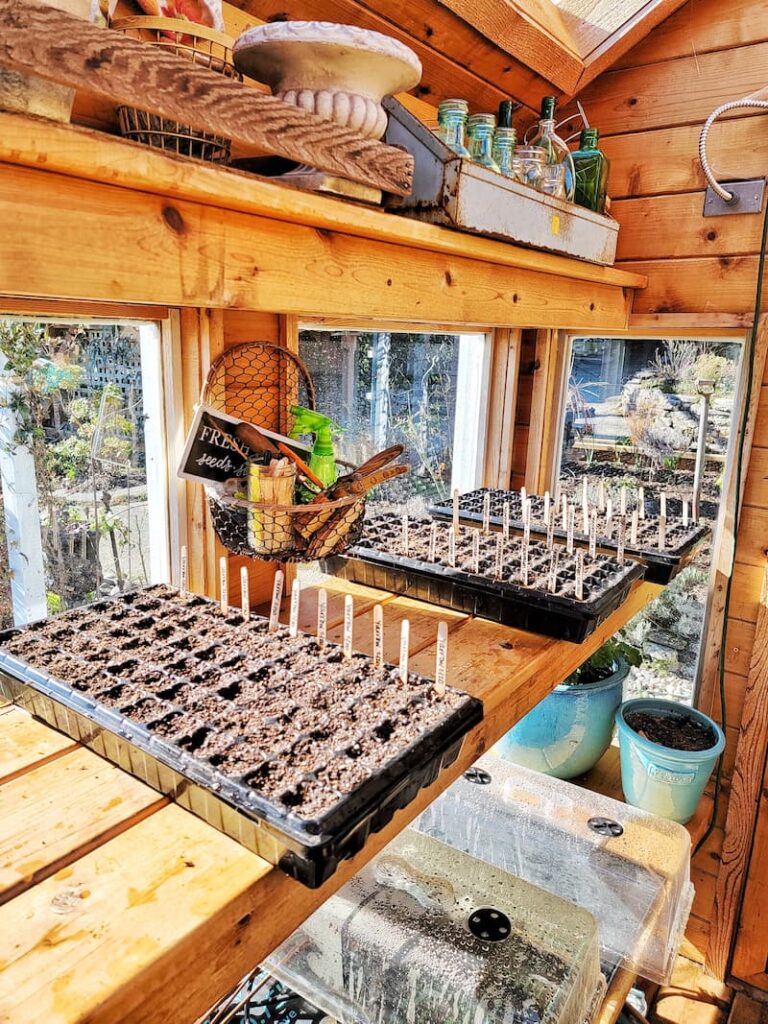
Starting snapdragon seeds indoors is a great idea, especially in an area with a shorter growing season. Here’s why I always choose to kick off my snapdragon journey inside:
Extended Growing Season
Kickstart your garden by sowing your seeds 8 to 10 weeks before the last frost. This head start lets your snapdragons develop strong roots and lush foliage, paving the way for an earlier, more vibrant bloom once they’re transplanted outdoors.
Better Germination Rates
Indoor growing means you can easily control the temperature and moisture levels. This consistent environment increases germination rates and gives your seedlings a healthy, robust start.
Protection from Elements
Young snapdragon plants are delicate, and keeping them indoors during their early stages shields them from harsh weather, pests, and diseases. This extra care makes them stronger and more resilient when they eventually face the outdoors.
Selectivity and Planning
When you start from seed indoors, you can access a wider variety of snapdragon types and colors than you might find at a local nursery.
It also gives you more control over your garden layout and design, as you can plan exactly where each plant will go once the seedlings are ready to be transplanted outdoors.
Cost-Effective
Starting plants from seeds is generally more cost-effective than purchasing young plants from a garden center. A single packet of seeds can produce many seedlings, giving you a beautiful garden at a fraction of the cost.
Do Snapdragons Need Darkness to Germinate?
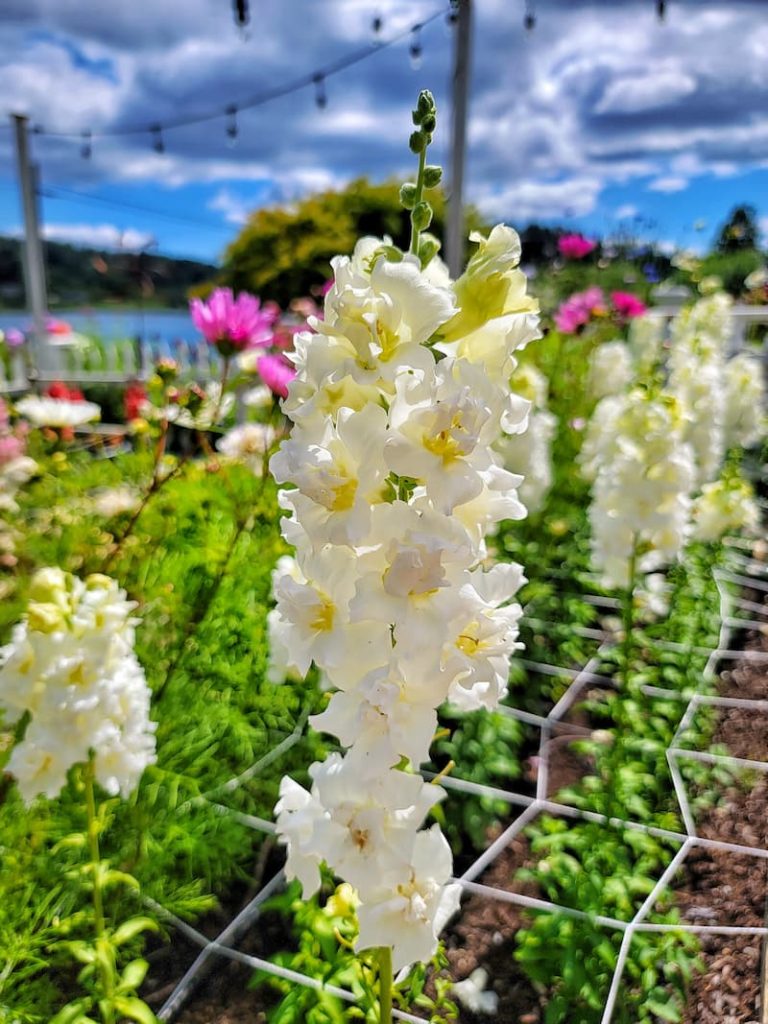
Snapdragons need light to germinate effectively. Unlike seeds that require darkness to kickstart germination, snapdragon seeds should be sown on the soil’s surface without being covered. This exposure to light aids in triggering their germination process.
When starting snapdragon seeds indoors, gently press them into the surface of a moist, well-draining starting mix, ensuring they are in firm contact with the soil but not buried.
Will Snapdragons Bloom All Summer?
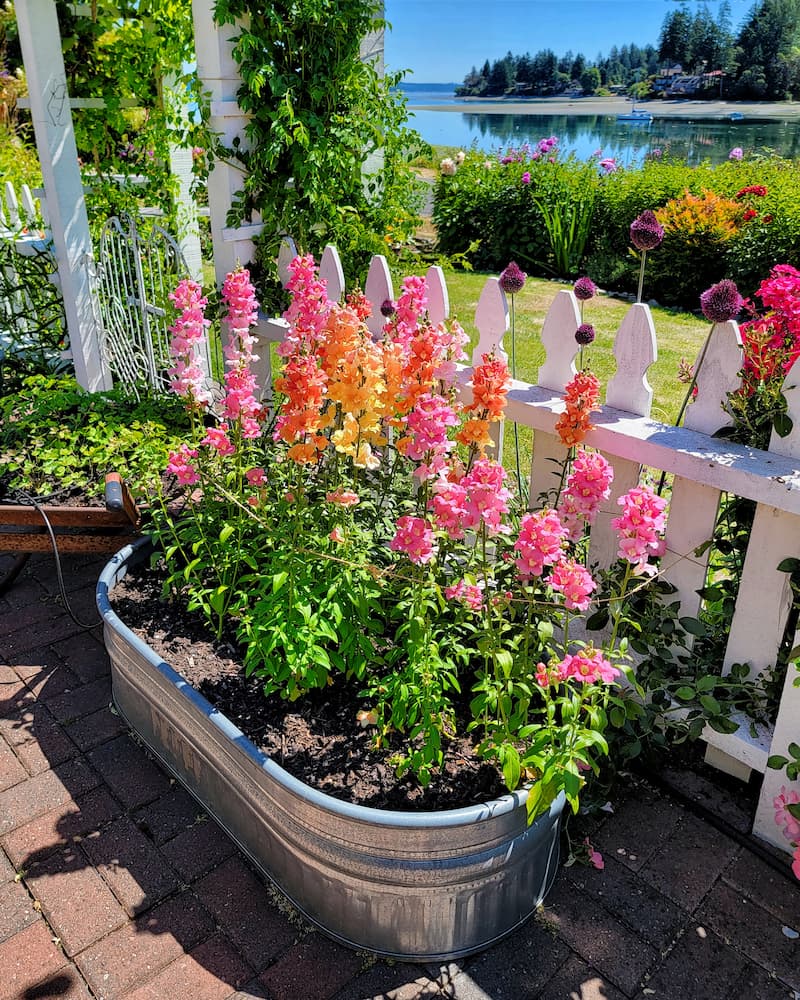
Snapdragons generally start blooming in late spring and continue into early summer, and under the right conditions, they can continue through summer and into fall.
In cooler climates, you might see them blooming all summer long, while in milder areas, they can sometimes surprise you with blooms, even in winter. Ultimately, how long your snapdragons bloom depends on the variety you choose, your local planting zone, and the care they receive throughout the season.
Garden Supplies and Tools
Check out my favorite garden supplies and tools for the growing season. Whether you’re looking for potting soil or deer repellent, you’ll find what I use in my own garden.
Final Thoughts for Growing Snapdragons from Seed Indoors
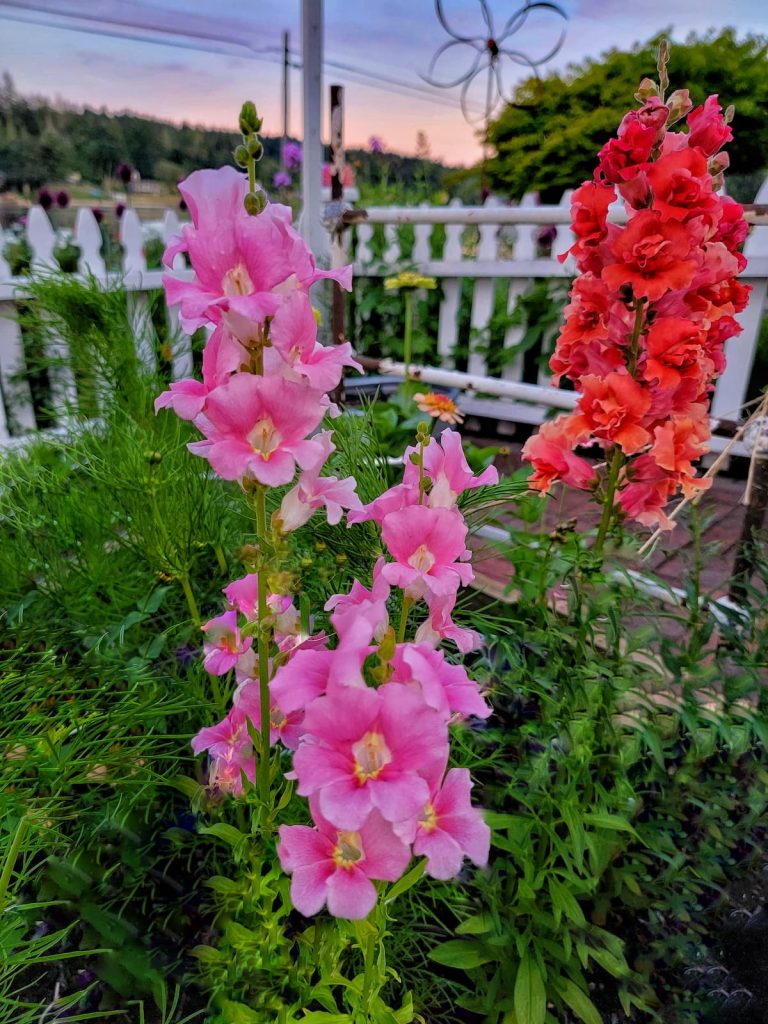
Growing snapdragons from seed indoors is a game changer. It lets you kick off the season early by nurturing delicate seedlings in a controlled environment before moving them outdoors. This extends your blooming period and gives you the freedom to choose from a wider variety of snapdragon types.
Paying attention to key details, like providing enough light during germination, prepping your soil just right, and gradually acclimating your seedlings to outdoor conditions, ensures your snapdragons can shine. With a bit of care, you can enjoy a stunning display from late spring into early fall.
If you have any questions or tips, drop them in the comments below. And don’t forget to share this post with anyone who might love these gardening tips as much as you do!
Until next time,
Happy Gardening!

I’m a self-taught hobby gardener. Everything I share on my blog is my opinion and what has worked for me.
MORE POSTS
For You To Enjoy
Follow Me for More Inspiration
Shop my Amazon Storefront, LTK sources, and my favorite home decor, garden, and lifestyle products. When you purchase from one of my links, I earn a small commission, which helps me continue sharing all the content you expect on my blog.
Follow me on Pinterest, Instagram, Facebook, TikTok and LIKEtoKNOW.it. Do you like gardening? Join my Facebook Gardening Tips & Tricks group.

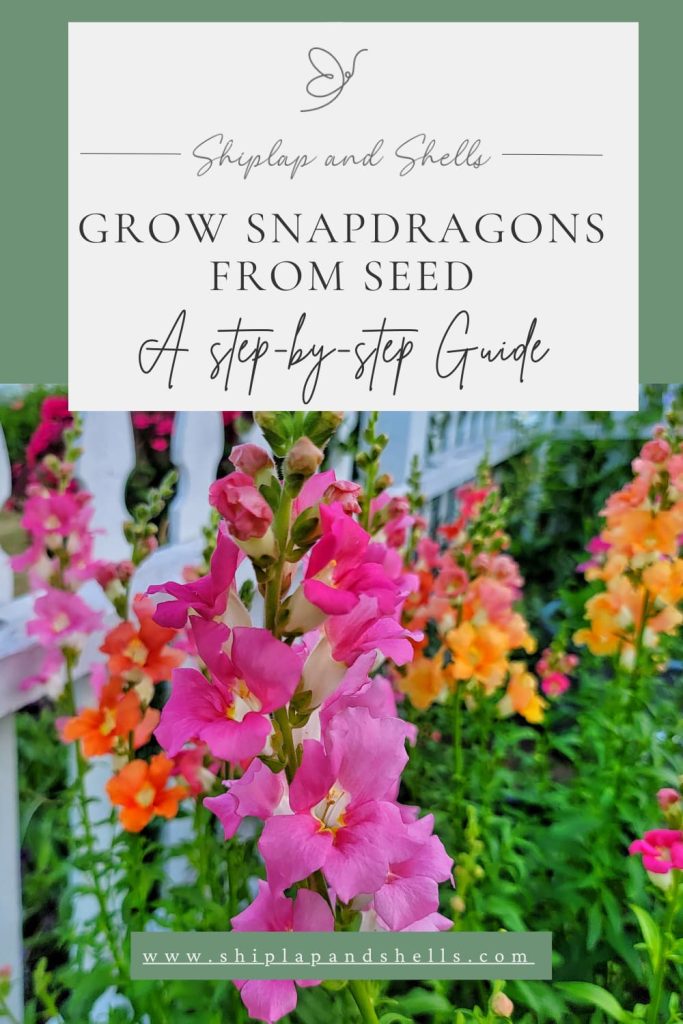

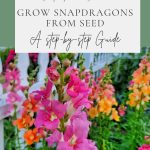











Once snapdragons germinate, how long does it take them to grow? I started some indoors for the first time and they germinated but it doesn’t seem like they are growing. They have their cotyledon leaves but haven’t changed much.
My snapdragon seedlings are super leggy- are they worth salvaging, or should I start over? Not sure what happened- they had light right above the humidity dome while germinating.
Hi Jenn! They are not necessarily a lost cause and can sometimes be salvaged with the right care and adjustments. Are you able to use grow lights placed a few inches above the plants? You might need to gently stake them to prevent them from bending or breaking. When transplanting snapdragons, you can bury a portion of their stem (similar to transplanting tomatoes) if the seedlings are leggy. Snapdragons can develop roots along the buried stem, which helps stabilize the plant and can encourage more robust growth. You can also try pinching back the top of the seedlings to encourage bushier growth, but this might delay flowering. Thank s so much for reaching out and let me know how they do.
My indoor seeds have germinated. Should i thin them out to one plant per cell or just let them keep growing before thinning?
Great informative post!
Hey there Kim! I love this post, if you don’t mind I am linking to it in my weekly round-up!
Sowing snapdragons today for the first time. I followed all your advice, let’s hope I can keep them alive!
I know they will be amazing! I can’t wait to see Jayne!
Great post! I have only grown the ones you buy at the nursery so I am super excited to start these from seed! I think I have chantilly mix – I have to check the packet! xoxoxo
You are going to love them so much Stacy! I’m so excited you’re growing them this year.
I never realized there was a difference in the size of the snap dragon plants! I always just thought yours were so much bigger because of the miraculous PNW growing environment! You always make it sound so easy and doable, Kim.
That’s so funny Anne! They really are an easy flower to grow. The only annoying part is netting them, but even that isn’t too bad. Thanks for visiting!